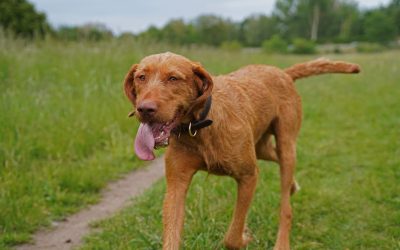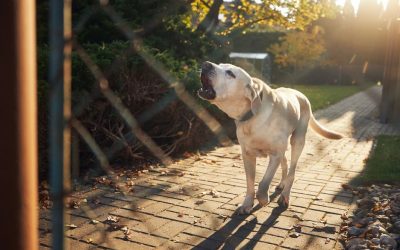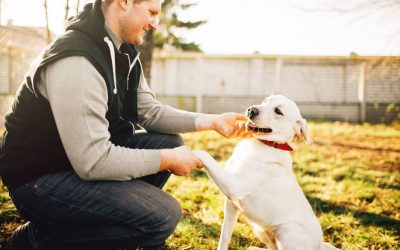Apartment Dogs: How to Train Your Canine for Close Quarters

Do you adore big dogs but live in a tiny apartment? Or perhaps you adopted an energetic pup without realizing how much space they’d need. Don’t worry – with the right training and commitment, it is absolutely possible for dogs of all sizes and activity levels to thrive in apartments and small homes.
While apartments present some unique challenges, living in tight quarters with your furry friend can be immensely rewarding. This blog will offer practical tips to make sure your dog’s needs are met and your small space stays dog-friendly. With a little creativity and adaptation on your part, your four-legged friend can thrive.
The Importance of Training Apartment Dogs
All dogs thrive on training, exercise and mental stimulation. When those needs aren’t adequately met, they can develop problematic behaviors that make apartment living difficult. Often, these behaviors can stem from fear and anxiety of new experiences or the unknown. That’s why focused training is so critical for city pups to get them comfortable with their surroundings and trust you.
Without proper outlets, apartment dogs are prone to nuisance barking, house soiling, chewing, digging and other destructive behaviors. These habits can stem from boredom, excess energy, and frustration. Proper crate training is also essential for apartment pets to prevent accidents or chewing when alone.
Techniques for Apartment Training
Impulse Control
Impulse control refers to a dog’s ability to resist their natural urges and impulses in order to obey a command or behave appropriately. A key component of impulse control training for dogs includes basic obedience. Basic obedience training helps instill important skills that are especially useful in small spaces. Teaching impulse control creates a well-mannered dog regardless of the environment.
Basic obedience training can include:
- Stay: Training a solid “stay” command teaches dogs to remain in place until released, controlling their temptation to break position or runoff.
- Leave it: The “leave it” cue instructs dogs not to touch food, objects, or other dogs when instructed, controlling their impulse to grab or chase.
- Wait: Dogs learn to wait patiently before taking food, going through doors, getting petted, etc. This controls their urge to jump ahead.
- Threshold training – Dogs are taught to sit and wait calmly while stimuli like open doors or other dogs pass by, controlling their impulse to burst through or lunge.
- Loose-leash walking: Dogs must control their impulse to pull on the leash and forge ahead, even when excited. You can even practice loose-leash walking in the halls of your apartment–just be sure to bring some treats.
- Settling: Dogs are trained to calmly settle on a mat rather than giving in to restlessness.
Impulse control training requires patience and consistency, but it lays the foundation for a well-behaved dog. Practicing these skills helps dogs throttle their impulses and make good choices despite tempting triggers. It’s especially valuable for energetic, strong-willed, or reactive dogs who need extra self-control.
Mental Stimulation
Physical exercise is only one part of keeping dogs engaged and content. Mental stimulation is just as important, especially for apartment pups who can’t run freely outdoors. Dogs love having jobs to do and puzzles to solve. When they put their brains to work, it tires them out as much as a long walk.
There are many ways to provide mental enrichment at home without much space:
- Puzzle toys: Toys that hide treats inside plastic cubes, balls, or plush toys require manipulation to earn the rewards.
- Snuffle mats: These fabric mats hide kibble or treats in folds and fleece for dogs to ferret out by sniffing and nuzzling.
- Nosework: Let your dog tap into their scent-hunting skills by hiding treats around your home for them to find.
- Trick training: Teaching new behaviors and tricks exercises your dog’s brain through concentration and repetition.
- Food puzzles: Devices that release food as dogs nudge, roll, or manipulate them add an intellectual challenge.
- Chew toys: Giving dogs approved bones, antlers, or chews occupies them for hours.
Mental exercise prevents boredom and destructive behaviors. Start with 5-10 minutes of brain games or puzzles and increase as your dog’s focus improves. A mentally worn-out dog is a calm, happy dog! Make sure to monitor your dog whenever you introduce a new chew or toy.
Socialization
While apartment dogs don’t have access to a spacious backyard, their environment offers plenty of built-in training experiences. The hustle and bustle of apartment buildings provide a stimulating backdrop full of sights, sounds, smells, and people.
With the proper positive reinforcement training, all these stimuli become opportunities to socialize and desensitize your dog to new things. The noises of doors slamming, vehicles passing and neighbors conversing get your dog comfortable with a range of sounds. The smells of food cooking and garbage cans teach them to ignore tempting aromas. Passersby in hallways or elevators help socialize them to strangers and other pets.
While apartment life can sometimes preclude long off-leash romps, it offers a convenient arena for real-world training that most suburban dogs never experience. With diligent socialization, desensitization, and obedience work, apartment dogs can thrive and be perfectly happy. Consistent training focused on the unique triggers of apartment living is key to avoiding tension and frustrations.
Rely on Reputable Tools
Training doesn’t have to be a solo endeavor. Reputable tools, such as those from Good Life Inc. can take your training to the next level with safe and effective strategies for curbing your dog’s worst habits–like excessive barking.
The Positive Pet™ Dog Training Collar, for example, offers a humane way to train your dog without using shock. This rechargeable collar emits a strong vibration and buzzing sound to get your dog’s attention and interrupt unwanted behaviors like barking, jumping, or begging. By grabbing your dog’s focus during bad habits, you can redirect them and reward good behavior for effective training.
Keeping Your Dog Calm and Happy
Dogs confined to small living spaces can easily become restless, stressed or destructive if their needs aren’t properly met. One of the most important things you can do is ensure your dog gets adequate physical exercise each day. Be sure to schedule at least 30-60 minutes of brisk daily activity like walks, runs, or playtime at a nearby park. This will prevent pent-up energy from manifesting in problematic behaviors like barking or chewing.
If your dog barks due to isolation, boredom or stress, Good Life Inc. can help. Our tools gently interrupt excessive vocalization with ultrasonic sounds or vibrations so you can redirect your dog’s energy into positive behaviors without any negative side effects. Combining humane bark correction with diligent training and exercise can nip nuisance barking in the bud.
It’s also essential to establish a predictable bathroom routine when living with a dog in an apartment. Take your dog outside to relieve themselves 3-5 times per day on a consistent schedule. Always praise and reward them for successful potty trips outdoors. An ingrained toilet schedule will help avoid indoor accidents.
Setting clear household rules and limits is another key to harmony in tight quarters. For example, train your dog not to get on furniture or counters, not to jump on or bark at guests, and not to chew any off-limit household items. Use crates, baby gates, humane bark collars or leashes whenever you can’t directly supervise to restrict access to temptation.
Support Your Apartment Dog with Good Life Inc.
While apartment living presents some unique challenges, dog owners can absolutely have happy, well-adjusted canine companions even in confined spaces. The key is meeting your dog’s needs for physical exercise, mental enrichment, and structure through training.
Adapting your lifestyle to support your pup in close quarters takes commitment. But the rewards of a calm, content city dog are well worth it!
With the proper preparation, patience, and tools, you can have the fulfilling experience of sharing small spaces with your furry best friend. While it requires some adjustments, apartment living with dogs can thrive with the right foundation of care and training.
Check out the Good Life Inc. blog today for more information on how to train and bond with man’s best friend.
Grace Olivier is a London-based freelance writer. She specializes in health, wellbeing, and travel.
Sources
National Library of Medicine – Improving dog training methods: Efficacy and efficiency of reward and mixed training methods
TIME Magazine – How Science is Revolutionizing the World of Dog Training






